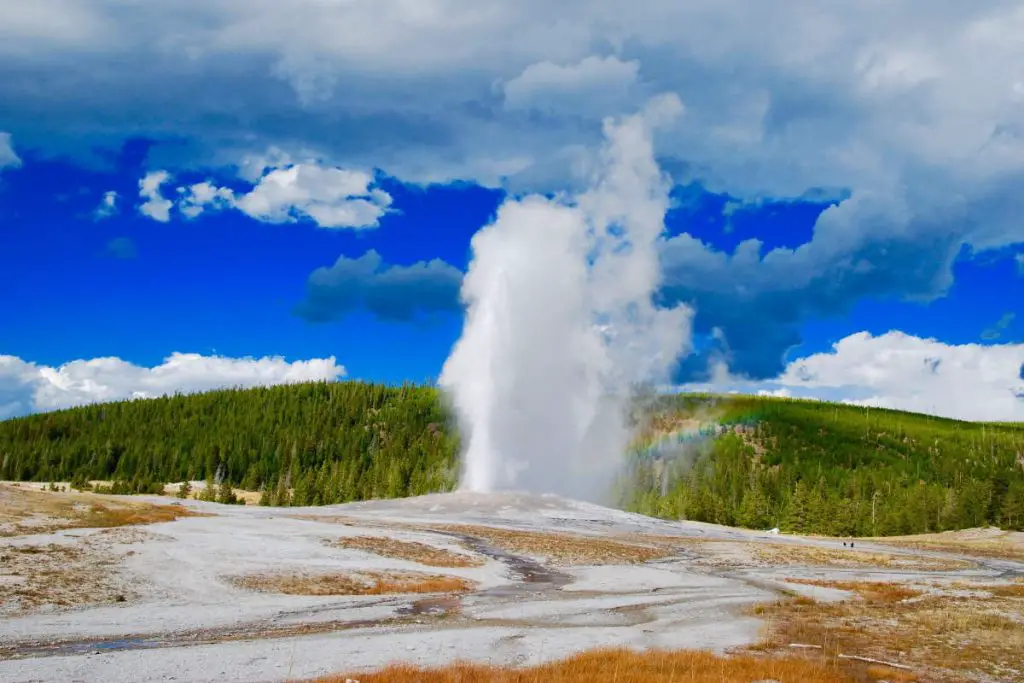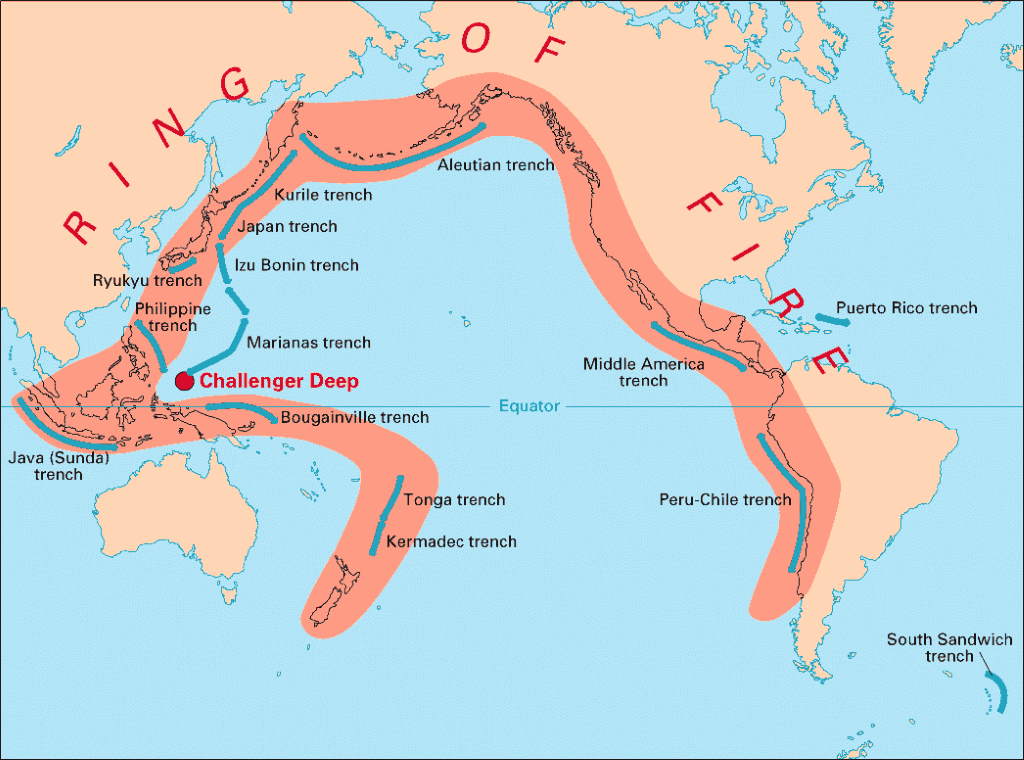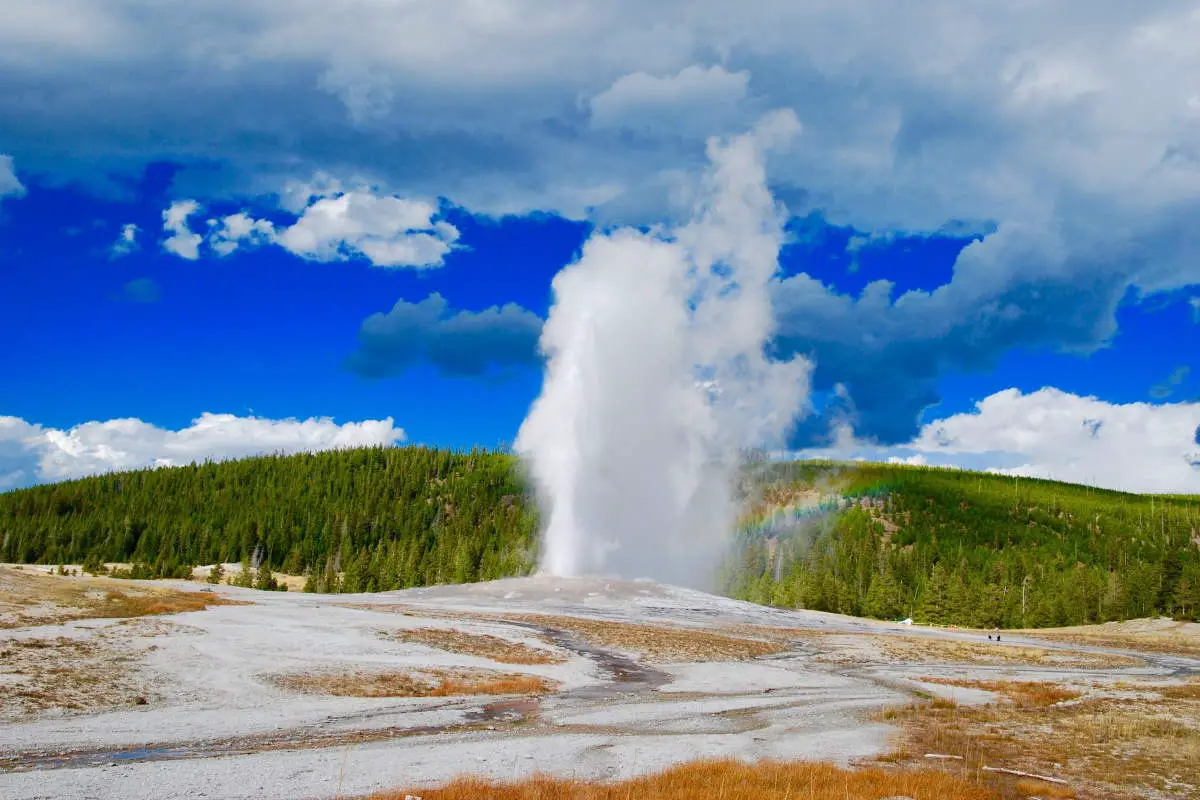Geothermal energy taps into and harvests the heat released from below the surface of the earth. It’s a renewable energy that doesn’t contribute to greenhouse gas emissions. Geothermal energy reduces our carbon footprint and doesn’t take up a structural footprint, either. Unlike the endless fields of wind turbines or solar panel arrays, most of the energy generation happens out of sight and underground.
Is Geothermal Energy Availability Widespread?
Geothermal energy can be found worldwide, but harvesting it is easier if the energy is closer to the earth’s surface. Areas with volcanic activity or rich in natural hot water reservoirs and hot springs are the best candidates for harnessing heat energy.
Most of the U.S. geothermal power plants are located in Hawaii and the West. California generates the most electricity in the country from geothermal energy. The U.S. Energy Information Administration (EIA) reports that the Geysers dry steam reservoir in Northern California is the largest known dry steam field worldwide. Generating geothermal power since 1960, the field is the largest producer of geothermal electricity in the world.

Other countries also tap into this renewable earth source. Iceland receives the world’s largest share of energy from geothermal power. Kenya is pushing for more geothermal heating and electricity generation. These projects may be large-scale commercial projects, but homeowners and small business owners may also be able to install systems to harness geothermal heat.
How A Geothermal System Works
The earth generates a lot of heat. The pressure needs to be released and often is through volcanic eruptions, bubbling hot springs, and geysers. Heated water that can’t escape is trapped beneath the earth’s surface in geothermal reservoirs. To produce geothermal energy, the water pooled in the geothermal reservoir is tapped.
For a geothermal system to work, the heat should be close to the surface. Not all areas have easy access to geothermal heat. Most people who do live in the “Pacific Ring of Fire,” which is the most productive area in the world for geothermal activity. The “Ring of Fire” encompasses the Pacific Ocean coastlines, including the western coast of the United States and the Hawaiian islands.

However, it’s not unusual for spots outside of the Ring of Fire to have hot springs and geothermal activity as well. The main question is, how powerful is this type of energy? In order to gauge, if hot springs or geothermal activity is robust enough to power your building, you need to investigate by measuring the flow of hot springs through tools like a weir or a flume.
If geothermal energy is viable in your area, there are two common methods used to access the hot water in the geothermal reservoir or hot spring pools beneath the surface, including:
1. Direct Geothermal Energy
If a hot spring or geothermal reservoir is available, vents are drilled down to the reservoir to create a continuously renewing cycle. The hot water is pumped from the reservoir to the home’s heat exchanger which draws the heat from the reservoir water into the heating system. The cooled water is returned to the geothermal reservoir where it reheats. This method is often used for swimming pools, small-scale agriculture, and even aquaculture like heating fish ponds.
2. Ground Source Heat Pump
A ground source heat pump is also known as a geothermal heat pump system. It’s similar to a standard heat pump. The difference is where the captured heat released. A traditional heat pump releases heat into the air while a ground source heat pump releases it into the ground.
Loops of buried pipe are filled with liquid that moves in and out of the home through a compressor and heat exchanger. The system draws the fluid heated by the earth to warm the house in the winter and carries heat away from the house to be absorbed by the ground in the summer.
Many geothermal systems circulate the looping pipe’s fluids below the flooring as radiant heat. In the summer, the process inverses to draw heat out of the home and circulate cool fluid. There are both horizontal and vertical heat pump systems, with the latter being used most often for commercial buildings.
Is A Geothermal System Worth the Investment?
As renewable sources pave the way for a cleaner society, it’s important to look at the return on investment as more than economic. It can be quite costly to make this change to geothermal power or green energy as a whole, but renewable energy actually saves you money while helping the environment in the long run. For industries that convert their business practices to ones that better protect the earth, such as using renewable energies like geothermal, the returns over the next decade could potentially be in the billions.
The U.S. encourages Americans to consider the long-term benefits of investing in renewable energy. The Economic Stimulus Recovery act of 2009 removed the cap on residential geothermal heat pumps and small wind systems. Homeowners are eligible for a federal tax incentive equal to 30% of the cost of purchasing and installing a geothermal heat pump system.
Although investing in geothermal energy greatly reduces your carbon footprint, it doesn’t diminish it completely. There are other factors like how much water you use, the energy efficiency of your home or business, and whether you reduce engine idling in your car. Harnessing geothermal energy or other renewable energy sources is just one part of living a more sustainable life. How can you ensure your decisions have less impact on the planet’s ecosystem?
- Miracle Drug or Snake Oil? How Consumers Can Tell the Difference - August 15, 2022
- Why Renewable Energy is a Geopolitical Issue - March 16, 2022
- Sustainable Trends in Manufacturing and Construction - January 28, 2022
